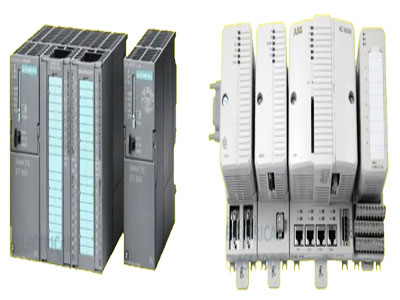
PLC vs DCS: How to Choose?
This might be one of the most common questions among automation engineers and technicians entering the industry: “What is the best option for my project? A PLC or a DCS?” As with most decisions in automation, the answer is: it depends. And in the case of PLCs and DCSs, the line between them is blurrier than in almost any other comparison in the automation world.
A Brief History
To better understand how PLCs and DCSs differ, it’s helpful to explore their origins.
PLCs (Programmable Logic Controllers) emerged in the 1960s to replace electromechanical relay systems for discrete control. General Electric led the effort to establish a new standard that delivered greater efficiency and flexibility.
Originally, PLCs were simple and served basic automation needs. However, as microprocessors became more powerful and widely available, the need arose for systems capable of handling more complex, continuous control processes—thus, the Distributed Control System (DCS) was born in 1975.
DCSs integrated functions that required external modules in PLCs and introduced features such as function blocks, allowing for advanced analog emulation and enhanced I/O management.
While PLCs have advanced dramatically often overlapping with the functionality of PACs (Programmable Automation Controllers) and even DCSs—DCSs have also evolved, focusing on software development, system integration, and advanced control capabilities.
Advantages of a PLC System
PLCs dominate industrial automation due to their:
-
Ease of use and modularity
-
Cost-effectiveness
-
Widespread availability of skilled developers
-
Compact form factors
-
Extremely fast scan times (<0.1 seconds)
PLCs are well-suited for discrete manufacturing processes, machinery control, and applications where high-speed response is critical.
While often marketed as scalable, PLCs are not the most efficient solution for extremely large or complex systems. However, they shine in scenarios where minimal infrastructure is required—such as systems that don’t need a dedicated HMI.
Advantages of a DCS
DCSs are the go-to solution for large-scale, continuous processes such as those found in:
-
Oil & gas
-
Chemical plants
-
Water treatment facilities
Key benefits include:
-
High I/O scalability
-
Built-in redundancy for improved reliability
-
Simplified integration with other systems
-
Better at handling complex analog processes (via function blocks)
Though DCSs often have longer scan times due to layered software, they offer centralized control and streamlined data management, making them ideal for process industries.
Manufacturers have also introduced modern features to DCSs such as wireless communication, embedded web servers, and mobile interfaces. These features improve functionality but must be implemented with care to maintain cybersecurity.
Conclusion
Choosing between a PLC and a DCS comes down to the specific requirements of your application:
-
Choose a DCS if your system involves continuous processes, requires high I/O scalability, or prioritizes system redundancy and centralized control.
-
Choose a PLC if your project involves discrete processes, rapid response times, or a need for a cost-effective, modular, and widely supported automation solution.
In the end, both systems play crucial roles in industrial automation. Your decision should be guided by process type, complexity, budget, and long-term scalability plans.
Contact PLG Automation
Email: sales@plgautomation.com
Phone: 800-906-9271
